.webp)
The Hajj is far more than just a journey; it is a profound spiritual odyssey, a pillar of Islam, and a testament to unity for millions of Muslims worldwide. This detailed guide explores what and when Hajj is, delves into its immense spiritual significance, and addresses common questions that both prospective pilgrims and those curious about this sacred ritual often ask. The Hajj culminates annually in the holy city of Makkah (Mecca), Saudi Arabia, drawing believers from every corner of the globe to fulfill a divine commandment.
I. What is Hajj? Understanding Islam's Fifth Pillar
The Hajj is the annual Islamic pilgrimage to Makkah, Saudi Arabia. It is one obligatory religious duty for all physically and financially able adult Muslims that must be carried out at least once in their lifetime. As the fifth of the Five Pillars of Islam, the Hajj stands alongside the Declaration of Faith (Shahada), daily prayers (Salah), obligatory charity (Zakat), and fasting during Ramadan (Sawm). The word "Hajj" itself originates from the Arabic root meaning "to intend a journey" or "to set out for a definitive purpose," truly encapsulating the pilgrim's profound intent.
A. The Spiritual Significance of Hajj: A Journey of Purification and Submission
The Hajj holds immense spiritual significance for every Muslim. It is a journey that deeply impacts the soul, leading pilgrims to reflect on their lives, seek forgiveness from Allah (God), and renew their connection to their Creator. The Hajj serves as a potent reminder of the fleeting nature of worldly life and the eternal significance of the hereafter.
- Seeking Forgiveness: A fundamental aspect of the Hajj is the opportunity for pilgrims to seek sincere repentance and forgiveness for their sins. Many Muslims believe that a Hajj performed with sincerity and devotion can purify one from all past sins, making them as pure as the day they were born. This promise of spiritual purification is a powerful motivator for undertaking the Hajj.
- Submission to Allah (SWT): The entire journey of Hajj is an act of complete submission to the will of Allah (SWT). From donning the simple Ihram garments to enduring the physical demands of the rituals, every step is a demonstration of obedience and unwavering faith. This submission is a central theme of Islam, and the Hajj embodies it.
- Unity and Equality: The Hajj is a powerful display of unity and equality within the global Muslim Ummah (community). Millions of pilgrims, irrespective of their nationality, race, social status, or wealth, gather in Makkah, all dressed in similar simple Ihram attire. This visual representation of unity emphasizes that all Muslims are equal in the eyes of Allah (SWT), fostering a deep sense of brotherhood and sisterhood.
- Remembrance of Prophets: The Hajj rituals extensively commemorate the historical events and trials faced by Prophet Ibrahim (Abraham), his wife Hajar, and their son Prophet Ismail (Ishmael), as well as the practices of Prophet Muhammad (peace be upon him). This connection to prophetic history deepens the spiritual experience of the Hajj and reinforces the continuity of Islamic tradition.
B. Who is Obligated to Perform Hajj? Conditions and Requirements
While the Hajj is obligatory, it is conditional upon a Muslim fulfilling certain requirements, ensuring that the pilgrimage is undertaken without undue hardship to the pilgrim or their dependents.
Conditions for Hajj Obligation:
- Islam: The individual must be a Muslim. The Hajj is exclusively for followers of Islam.
- Maturity (Bulugh): The pilgrim must be an adult, having reached the age of puberty. While children can accompany their parents on Hajj, it does not fulfill their adult obligation.
- Sanity (Aql): The pilgrim must be of sound mind.
- Financial Ability (Istita'ah): This is a crucial condition. The individual must have sufficient funds to cover:
- Travel expenses to and from Makkah.
- Accommodation and food during the pilgrimage.
- The financial capability to support their family or dependents during their absence.
- The pilgrim must be free from debts or have arrangements to settle them without a burden.
- Physical Ability: The pilgrim must be healthy enough to undertake the physically demanding journey and perform the intricate rituals. This includes being able to walk long distances and endure various climatic conditions. Saudi authorities also implement age restrictions and health requirements, especially post-pandemic, requiring certain vaccinations.
- Security/Safety: The journey to and from Makkah should be safe, free from unreasonable risks to life or property.
- For Women: A woman must be accompanied by a Mahram (a male guardian, such as a husband, father, brother, or son) or be part of a group of trusted women pilgrims.
Table: Key Requirements for Hajj Obligation
Condition | Detail of Requirement |
Religion | Must be a Muslim. |
Maturity | Must have reached the age of puberty. |
Sanity | Must be of sound mind and capable of understanding the rituals. |
Financial Ability | Sufficient funds for travel, accommodation, food, and family support, after clearing debts. |
Physical Ability | Good health to endure physical demands (walking, standing), without jeopardizing one's well-being. |
Security of Journey | The path to and from Makkah must be safe and secure. |
Mahram (for women) | Women must be accompanied by a Mahram or travel in a safe group of women. |
II. When is Hajj? The Lunar Calendar and Its Impact
The Hajj takes place annually during a specific period in the Islamic lunar calendar. Understanding when Hajj is requires familiarity with the Hijri calendar, which differs from the Gregorian calendar.
A. The Islamic Lunar Calendar: Dhul-Hijjah
The Hajj is performed between the 8th and 12th (or 13th) of Dhul-Hijjah, which is the twelfth and final month of the Islamic lunar calendar. The timing generally falls roughly 70 days after the end of Ramadan, although this can vary slightly depending on lunar sightings.
- Lunar vs. Gregorian: Because the Islamic calendar is based on lunar cycles (with months lasting 29 or 30 days), the dates of Hajj shift approximately ten to twelve days earlier each year in the Gregorian calendar. This means that over a cycle of about 33 years, the Hajj will occur in every season.
- Hajj 2025 Dates: In 2025 AD (1446 AH), the Hajj is scheduled to take place from approximately June 4 to June 9. Pilgrims often start arriving in Makkah days or even weeks in advance to prepare for the monumental journey of Hajj. It's noteworthy that 2025 marks the last time for the next 16 years that the Hajj will occur during Makkah's peak summer heat, making the physical demands even more significant.
- Future Hajj Dates (Estimated):
- 1446 AH / 2025 AD: Approximately June 4 – June 9
- 1447 AH / 2026 AD: Approximately May 24 – May 29
- 1448 AH / 2027 AD: Approximately May 14 – May 19
Table: Hajj Dates (Gregorian Calendar Shift)
Islamic Year (AH) | Gregorian Year (AD) | Approximate Hajj Dates |
| 1443 | 2022 | July 7 – July 12 |
| 1444 | 2023 | June 26 – July 1 |
| 1445 | 2024 | June 14 – June 19 |
1446 | 2025 | June 4 – June 9 |
| 1447 | 2026 | May 24 – May 29 |
| 1448 | 2027 | May 14 – May 19 |
III. An Illustrated Guide to Hajj Rituals: A Step-by-Step Journey
The Hajj is a meticulously structured series of rituals that span five to six days, commencing on the 8th of Dhul-Hijjah. An "illustrated guide" would visually depict each stage, showcasing the devotion and unity of the pilgrims. Here, we describe the key rituals, imagining the visual elements.
A. Preparation and Ihram (Before 8th Dhul-Hijjah)
The journey to Hajj begins long before reaching Makkah. Pilgrims must prepare themselves spiritually, physically, and financially.
- Niyyah (Intention): This is the heartfelt intention to perform Hajj solely for the sake of Allah (SWT). (Visual: A pilgrim with hands raised in prayer, reflecting on their sincere intention).
- Physical Preparation: The Hajj is physically demanding. Pilgrims are advised to engage in regular walking and exercise to build stamina. (Visual: People walking briskly, perhaps in traditional attire, preparing their bodies).
- Financial Preparation: Ensuring all debts are cleared and sufficient funds are available for the journey and family back home. (Visual: People managing finances, perhaps giving charity).
- Ihram: Entering the state of ritual purity, known as Ihram, is crucial. This involves specific attire and abstaining from certain actions.
- For Men: Two seamless white cloths (one wrapped around the waist, the other draped over the shoulder). Head uncovered, and specific footwear that reveals ankles and toes. (Visual: Men in simple white Ihram garments, a stark image of equality).
- For Women: Modest, unstitched clothing that covers the entire body, typically white or black, but face and hands must remain uncovered. Shoes that cover the entire foot are permissible. (Visual: Women in modest, simple attire, hands and faces uncovered, embodying humility).
- Prohibitions in Ihram: During Ihram, pilgrims must abstain from applying perfume, cutting hair or nails, engaging in marital relations, hunting, using harsh language, and wearing sewn clothes (for men). (Visual: Icons representing forbidden actions crossed out).
- Talbiyah: Continuously reciting the Talbiyah as they approach Makkah: "Labbaik Allahumma Labbaik, Labbaik La Sharika Laka Labbaik, Innal Hamda Wannimata Laka Wal Mulk, La Sharika Lak" (Here I am, O Allah, here I am. Here I am. No partner do You have. Here I am. Verily all praise and blessings are Yours, and all sovereignty. No partner do You have.) (Visual: Crowds of pilgrims, their lips moving in unison, echoing the Talbiyah).
B. The Umrah (Optional, for Tamattu' Hajj)
Pilgrims performing Tamattu' Hajj first perform Umrah upon arrival in Makkah, then break their Ihram, and re-enter Ihram for Hajj on the 8th Dhul-Hijjah.
- Tawaf al-Qudum (Arrival Tawaf): Upon arriving at the Kaaba, pilgrims perform an initial circumambulation of the Kaaba seven times in a counter-clockwise direction. (Visual: A bird's-eye view of thousands of pilgrims circling the Kaaba, a powerful vortex of devotion).
- Sa'i between Safa and Marwah: Walking seven times between the two hills of Safa and Marwah, commemorating Hajar's desperate search for water for Ismail. (Visual: Pilgrims walking and jogging between two indoor pathways, representing the hills, with green markers indicating where to jog).
- Halq (Shaving) or Taqsir (Trimming): Men shave their heads (Halq), while women trim a fingertip's length of their hair (Taqsir), signifying the end of Umrah. (Visual: Men getting their heads shaved, women having a small lock of hair trimmed).
C. Day 1: 8th Dhul-Hijjah – Yawm al-Tarwiyah (The Day of Quenching Thirst)
Pilgrims re-enter the state of Ihram for Hajj and travel to Mina.
- Journey to Mina: Pilgrims move from Makkah to Mina, a large tent city approximately 8 kilometers away. They spend the day and night in Mina, focusing on prayer and reflection. (Visual: Vast expanse of white tents in Mina, pilgrims resting and praying inside).
- Prayers in Mina: They offer Dhuhr, Asr, Maghrib, Isha, and Fajr prayers in Mina, shortening the four-unit prayers to two units.
D. Day 2: 9th Dhul-Hijjah – Yawm al-Arafah (The Day of Arafat) - The Pinnacle of Hajj
This is the most crucial day of the Hajj.
- Wuquf at Arafat: After Fajr, pilgrims travel to the plains of Arafat, a vast, open area. From noon until sunset, they stand, pray, and make sincere supplications (Dua) to Allah (SWT). This "standing" is the most important ritual of Hajj, without which the Hajj is incomplete. It is a day of intense spiritual reflection and seeking forgiveness. (Visual: Millions of pilgrims standing on the plains of Arafat, hands raised in fervent prayer, a truly humbling and awe-inspiring sight).
- Combined Prayers: Dhuhr and Asr prayers are combined and shortened at Arafat.
- Journey to Muzdalifah: After sunset, pilgrims leave Arafat and proceed to Muzdalifah, an open plain between Arafat and Mina. They pray Maghrib and Isha together and spend the night under the open sky. (Visual: A stream of humanity moving from Arafat towards Muzdalifah, pilgrims sleeping on the ground).
- Collecting Pebbles: In Muzdalifah, pilgrims collect small pebbles (at least 49, but often more as a contingency) for the upcoming stoning ritual.
E. Day 3: 10th Dhul-Hijjah – Yawm al-Nahr (The Day of Sacrifice) - Eid al-Adha
This is a day of major rituals, coinciding with Eid al-Adha for Muslims worldwide.
- Rami al-Jamarat (Stoning of Jamrat al-Aqabah): Pilgrims travel back to Mina and proceed to Jamrat al-Aqabah (the largest of the three pillars). They throw seven pebbles at this pillar, symbolizing the rejection of evil and Satan, following Prophet Ibrahim's example. (Visual: Pilgrims throwing pebbles at a large pillar, a representation of resisting temptation).
- Hady (Animal Sacrifice/Qurbani): Pilgrims (primarily those performing Tamattu' or Qiran Hajj) offer an animal sacrifice (usually a sheep, goat, or camel) to commemorate Prophet Ibrahim's willingness to sacrifice his son Ismail in obedience to Allah (SWT). The meat is then distributed to the needy. (Visual: An animal being ritually sacrificed, with emphasis on the distribution of meat to the poor).
- Halq (Shaving) or Taqsir (Trimming): Men shave their heads completely, while women trim a small portion of their hair. This marks the partial end of their Ihram restrictions. (Visual: Men with freshly shaved heads, symbolizing purity and new beginnings).
- Tawaf al-Ifadah (Tawaf of Return/Pilgrimage): Pilgrims return to Makkah to perform another circumambulation of the Kaaba, known as Tawaf al-Ifadah. This is an obligatory part of Hajj. (Visual: Pilgrims performing Tawaf around the Kaaba again, perhaps with a sense of accomplishment and renewed spirituality).
- Sa'i (If not performed with Umrah): If a pilgrim is performing Ifrad Hajj or Qiran Hajj and did not perform Sa'i with their initial Tawaf, they perform it now.
F. Days 4 & 5: 11th & 12th Dhul-Hijjah – Ayyam al-Tashreeq (Days of Drying Meat)
Pilgrims remain in Mina for these days, continuing the stoning ritual.
- Rami al-Jamarat (Stoning all three Jamarat): On both the 11th and 12th Dhul-Hijjah, pilgrims stone all three Jamarat (small, medium, and large pillars) with seven pebbles each, repeating the act of rejecting evil. (Visual: Pilgrims moving between the three pillars, performing the stoning ritual with solemnity).
- Staying in Mina: Pilgrims spend the nights in Mina, engaging in prayer, remembrance of Allah (Dhikr), and reflection.
- Departure from Mina: Pilgrims may leave Mina for Makkah on the 12th Dhul-Hijjah after completing the stoning, or they may choose to stay an extra day and stone the Jamarat again on the 13th Dhul-Hijjah.
G. Farewell Tawaf: Tawaf al-Wada (Before Leaving Makkah)
The final ritual before departing Makkah.
- Tawaf al-Wada: Before leaving Makkah, every pilgrim performs a final circumambulation of the Kaaba seven times. This is a farewell ritual, marking the conclusion of the Hajj journey. (Visual: Pilgrims performing a final emotional Tawaf, some with tears in their eyes, bidding farewell to the Kaaba).
IV. Answers to 10 Common Questions about Hajj
Here, we address some of the most frequently asked questions about the Hajj, providing detailed insights for those seeking to understand this spiritual journey.
1. What is the spiritual significance of the Hajj?
The spiritual significance of Hajj is immense and multi-layered. It is a journey of profound introspection, purification, and renewal of faith. Pilgrims experience a unique sense of unity and equality, stripping away worldly distinctions to stand as equals before Allah (SWT). The Hajj offers a chance for sincere repentance, with the belief that a valid Hajj can cleanse one of all previous sins. It is a physical and spiritual ordeal that tests patience, resilience, and devotion, ultimately strengthening one's connection to Allah and the global Muslim community. The remembrance of Prophets Ibrahim, Hajar, Ismail, and Muhammad (peace be upon them all) throughout the rituals deepens this spiritual significance, connecting pilgrims to the rich history of their faith.
2. When exactly does Hajj take place each year?
As established, the Hajj takes place annually between the 8th and 12th (or 13th) of Dhul-Hijjah, the final month of the Islamic lunar calendar. Because the Islamic calendar is lunar, the dates of Hajj shift approximately 10 to 12 days earlier each year in the Gregorian calendar. For instance, in 2025, the Hajj will be from approximately June 4 to June 9. This annual shift means that over time, Hajj occurs in all seasons, each presenting its own unique challenges and blessings for the pilgrims.
3. What are the main rituals of Hajj, step-by-step?
The main rituals of Hajj can be summarized in a step-by-step guide, as described in detail in Section III. In brief, they include:
- Niyyah and Ihram: Making a sincere intention and entering the state of ritual purity.
- Tawaf al-Qudum (Arrival Tawaf): Circumambulating the Kaaba upon arrival (for Tamattu' pilgrims).
- Sa'i: Walking between Safa and Marwah (for Tamattu' pilgrims after Tawaf).
- Travel to Mina (8th Dhul-Hijjah): Spend the day and night in Mina.
- Wuquf at Arafat (9th Dhul-Hijjah): The pinnacle of Hajj, standing in prayer and supplication on the plains of Arafat from noon till sunset.
- Muzdalifah (Night of 9th Dhul-Hijjah): Traveling to Muzdalifah, praying, and collecting pebbles.
- Rami al-Jamarat (10th Dhul-Hijjah): Stoning Jamrat al-Aqabah (the largest pillar) in Mina.
- Hady (Sacrifice): Offering an animal sacrifice.
- Halq or Taqsir: Shaving (men) or trimming (women) hair.
- Tawaf al-Ifadah: Performing the obligatory circumambulation of the Kaaba.
- Ayyam al-Tashreeq (11th & 12th/13th Dhul-Hijjah): Remaining in Mina and stoning all three Jamarat daily.
- Tawaf al-Wada (Farewell Tawaf): Performing a final circumambulation of the Kaaba before leaving Makkah.
4. What are the conditions and requirements for performing Hajj?
The conditions and requirements for performing Hajj to make it obligatory are being a Muslim, adult, sane, financially able, physically capable, and having a safe journey. For women, a Mahram or a trusted group of women is also a requirement. These conditions ensure that the pilgrim can undertake the challenging journey without undue burden or risk, making the Hajj accessible to those who are truly able. Financial ability includes covering all expenses of the journey and supporting dependents back home. Physical ability means being healthy enough to perform demanding rituals.
5. What is the history of Hajj and its origins?
The history of Hajj is deeply rooted in prophetic tradition, tracing back thousands of years before the advent of Islam as we know it today. According to Islamic tradition and the Quran, elements of Hajj rituals trace back to the Prophet Ibrahim (Abraham). It is believed that Allah (SWT) commanded Ibrahim to leave his wife Hajar and infant son Ismail in the barren desert of ancient Makkah. It was during Hajar's desperate search for water for Ismail that the miraculous Zamzam well sprang forth. Later, Prophet Ibrahim and Prophet Ismail were commanded to build the Kaaba, the sacred House of Allah, which became the central point for pilgrimage. The current pattern of Hajj rituals was formally established and taught by Prophet Muhammad (peace be upon him) during his Farewell Pilgrimage in 632 AD, in the 10th year of the Islamic calendar, reviving and purifying the ancient pilgrimage traditions.
6. What is the significance of the Kaaba in Hajj?
The Kaaba is the cube-shaped sacred structure located at the heart of Masjid al-Haram (the Grand Mosque) in Makkah. Its significance in Hajj is paramount. It is the focal point of Muslim prayers worldwide; all Muslims face the Kaaba during their daily Salah. During Hajj and Umrah, pilgrims circumambulate the Kaaba (Tawaf) seven times in a counter-clockwise direction. This act symbolizes the unity of believers revolving around one central point of worship, representing submission to one God. The Kaaba reminds pilgrims of their purpose and their connection to the vast global Muslim community. It is not worshipped itself, but serves as a directional point, a symbol of unity and devotion.
7. What is the meaning of Tawaf and Sa'i in the Hajj rituals?
Tawaf and Sa'i are two core rituals of Hajj and Umrah, each carrying profound meaning:
- Tawaf: This ritual involves circumambulating the Kaaba seven times in a counter-clockwise direction. Each circuit begins and ends at the Black Stone. The meaning of Tawaf lies in symbolizing the unity of God and His creation. It represents the constant movement of celestial bodies around a central point, mirroring the devotion of believers revolving around the Kaaba, the central point of worship on Earth. It signifies that all creation revolves around the Oneness of Allah (SWT), and pilgrims are part of this universal worship.
- Sa'i: This ritual involves walking and jogging seven times between the two small hills of Safa and Marwah, near the Kaaba. The meaning of Sa'i commemorates the tireless efforts of Hajar, Prophet Ibrahim's wife, as she desperately ran between these hills seven times in search of water for her infant son Ismail in the barren desert. Her perseverance and unwavering trust in Allah (SWT) were rewarded with the gushing forth of the Zamzam well. Sa'i symbolizes patience, reliance on God, and the pursuit of sustenance and blessings through effort.
8. What is the role of Arafat in the Hajj?
The role of Arafat in Hajj is pivotal, so much so that it is considered the very essence of the pilgrimage. The Day of Arafat (9th Dhul-Hijjah) is the most significant day of Hajj. Pilgrims gather on the vast, open plains of Arafat and spend the time from noon until sunset in intense prayer, reflection, and sincere supplication (Dua). It is believed that on this day, Allah (SWT) descends to the nearest heaven, granting forgiveness and mercy to those who sincerely repent. The Prophet Muhammad (PBUH) stated, "Hajj is Arafat." Without the standing (Wuquf) at Arafat, the Hajj is incomplete. It is a powerful moment of spiritual cleansing, where millions unite in humble supplication, embodying ultimate devotion and submission to Allah (SWT).
9. What is the importance of Mina and the stoning ritual in Hajj?
Mina is a large tent city located about 8 kilometers from Makkah, serving as a crucial base camp during Hajj. Its importance lies in being the place where pilgrims spend the 8th, 10th, 11th, and 12th (or 13th) of Dhul-Hijjah. It's a place for rest, prayer, and preparation for the subsequent rituals. The stoning ritual (Rami al-Jamarat), performed in Mina, is a symbolic act of rejecting evil and resisting temptations. It commemorates Prophet Ibrahim's defiance of Satan, who tried to dissuade him from sacrificing his son. Pilgrims throw seven pebbles at the three pillars (Jamarat) on specific days, signifying their rejection of the devil's whispers and reaffirming their commitment to Allah's commands. This ritual reinforces the pilgrim's resolve to fight internal and external evil throughout their lives.
10. What are the benefits and blessings of performing Hajj?
The benefits and blessings of performing Hajj are immense and transcend worldly gains, focusing primarily on spiritual rewards:
- Forgiveness of Sins: Perhaps the greatest blessing is the promise of complete forgiveness of sins. Prophet Muhammad (PBUH) said, "Whoever performs Hajj and does not commit any obscenity or wrongdoing, will return as a newborn baby [free of all sins]."
- Entry into Paradise: An accepted Hajj (Hajj Mabrur) is believed to have no reward other than Paradise.
- Spiritual Growth and Purification: The entire journey refines a pilgrim's character, fostering patience, humility, perseverance, and gratitude. It purifies the soul and strengthens one's faith.
- Unity and Brotherhood: The Hajj brings together millions of Muslims from diverse backgrounds, fostering an unparalleled sense of unity, equality, and brotherhood (and sisterhood) that transcends all worldly distinctions.
- Connection to Prophetic History: Pilgrims walk in the footsteps of Prophets Ibrahim, Hajar, Ismail, and Muhammad, deepening their understanding and connection to Islamic history and the struggles of the prophets.
- Increased Awareness and Knowledge: Mixing with Muslims from around the world increases awareness about global Muslim issues and strengthens mutual support.
- Moral and Ethical Refinement: The stringent rules of Ihram and the demands of Hajj instill discipline, self-control, and ethical behavior, encouraging pilgrims to renounce negative traits like lying, backbiting, and animosity.
V. Practical Considerations for the Hajj Journey
Beyond the rituals and spiritual aspects, prospective pilgrims must consider several practical elements for a successful Hajj journey.
A. Health and Fitness: A Pre-Hajj Imperative
The Hajj is a physically demanding endeavor. Pilgrims must ensure they are in good health.
- Medical Check-ups: Comprehensive medical screenings are advisable before embarking on Hajj.
- Vaccinations: Compliance with required vaccinations (e.g., Meningitis, Yellow Fever, Polio, and increasingly, COVID-19) is mandatory for obtaining a Hajj visa.
- Physical Conditioning: Regular walking and light exercise for months leading up to Hajj can significantly improve stamina for the long walks and crowded conditions.
- Managing Chronic Conditions: Pilgrims with chronic illnesses must consult their doctors and carry adequate medication, along with relevant medical records.
B. Packing Essentials: Smart Preparation for Hajj
Packing wisely can greatly enhance the comfort and ease of the Hajj journey.
- Ihram Garments: At least two sets of Ihram for men, and appropriate modest clothing for women.
- Comfortable Footwear: Sandals for men during Ihram, and comfortable walking shoes for both genders, suitable for long distances.
- Personal Hygiene Items: Unscented soap, shampoo, and toiletries (essential during Ihram).
- Basic Medical Kit: Pain relievers, band-aids, antiseptic wipes, rehydration salts, and any personal medications.
- Prayer Essentials: A small prayer mat, a pocket Quran, and a prayer beads (Tasbeeh).
- Sun Protection: Umbrella, sunglasses, and sunblock, especially given the potential for intense heat, as in Hajj 2025.
- Small Backpack/Sling Bag: For carrying essentials during rituals.
Checklist: Essential Packing for Hajj
- Ihram cloths (men) / Modest clothing (women)
- Comfortable sandals/shoes
- Unscented toiletries
- Small prayer mat & pocket Quran
- Basic first aid kit
- Sunscreen, umbrella, sunglasses
- Small, lightweight backpack
- Passport, visa, travel documents
- Cash (Saudi Riyals) & credit/debit cards
- Portable charger/power bank
C. Navigating Crowds and Staying Hydrated
The sheer volume of pilgrims during the Hajj presents unique challenges.
- Crowd Management: Pilgrims should follow instructions from Saudi authorities and group leaders, especially during peak times at the Jamarat and around the Kaaba. Patience is paramount.
- Hydration: Staying hydrated is critical, especially during the hot weather, as is expected for Hajj 2025. Drinking plenty of Zamzam water and other fluids is highly recommended.
- Rest: Despite the packed schedule, finding opportunities for rest is important to conserve energy.
VI. The Enduring Legacy of Hajj: A Transformative Experience
The Hajj is a transformative experience that leaves an indelible mark on the lives of those who undertake it. It is not merely a set of rituals but a journey that shapes character, deepens faith, and reinforces the bonds of the global Muslim community.
A. A Renewed Sense of Purpose
Many pilgrims describe returning from Hajj with a profound sense of peace, clarity, and renewed purpose. The intense focus on Allah (SWT) during the pilgrimage often leads to a commitment to live a more righteous life, adhering closely to Islamic teachings. The title of "Hajji" or "Hajjah" (for women) is often used with reverence, signifying the completion of this monumental spiritual journey.
B. Strengthening Global Muslim Unity
The annual gathering of millions for Hajj serves as a powerful reminder of the unity and diversity of the Muslim Ummah. It fosters an understanding and empathy between people from vastly different cultures, languages, and backgrounds, all united in their submission to one God. This collective worship on such a grand scale is a unique phenomenon, emphasizing the universal brotherhood and sisterhood of Islam.
C. A Continuous Cycle of Devotion
For those who have performed Hajj, the experience often instills a desire to maintain the spiritual momentum throughout their lives. The lessons of patience, humility, and unwavering faith learned during Hajj continue to guide them in their daily lives, ensuring that the transformative effects of the pilgrimage are enduring.
In conclusion, the Hajj is an extraordinary journey that transcends time and geography. From its ancient origins to its annual observance in the holy city of Makkah, it remains a cornerstone of Islam, offering unparalleled spiritual purification, unity, and a profound connection to Allah (SWT). Understanding what and when Hajj is, along with its intricate rituals and immense spiritual significance, allows one to truly appreciate the depth and beauty of this sacred pilgrimage truly.
;
More Travel News
-
 21-Apr-2025Social Media Posts Favoring Palestine May Lead to USA Visa Rejection for Pakistani Applicants
21-Apr-2025Social Media Posts Favoring Palestine May Lead to USA Visa Rejection for Pakistani Applicants -
 11-Sep-2019Tips to Find a Good Umrah Travel Agency in Pakistan
11-Sep-2019Tips to Find a Good Umrah Travel Agency in Pakistan -
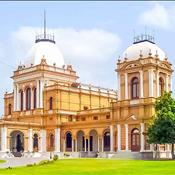 16-Mar-2020Top Tourist Spots in South Punjab
16-Mar-2020Top Tourist Spots in South Punjab -
 14-Jul-2021What Countries Require Travel Insurance in 2021
14-Jul-2021What Countries Require Travel Insurance in 2021 -
 21-Mar-2020Coronavirus: A Major Hit On Worlds’ Tourism
21-Mar-2020Coronavirus: A Major Hit On Worlds’ Tourism -
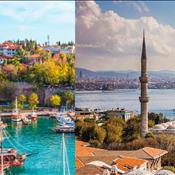 05-Jun-2023Top 10 places to visit in Turkey this summer of 2023
05-Jun-2023Top 10 places to visit in Turkey this summer of 2023 -
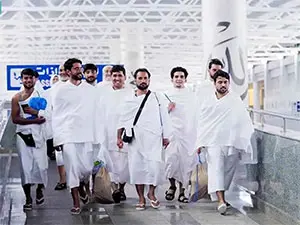 19-Apr-2025Saudis target more than 2.5 Million Seats for Umrah flights by 2025
19-Apr-2025Saudis target more than 2.5 Million Seats for Umrah flights by 2025 -
.jpg) 09-Sep-2025New Travel Policies Announced for Tourists Visiting Turkey in 2025
09-Sep-2025New Travel Policies Announced for Tourists Visiting Turkey in 2025 -
 25-Oct-2025After five-year hiatus, Pakistan International Airlines (PIA) launches direct flights from Pakistan to the UK
25-Oct-2025After five-year hiatus, Pakistan International Airlines (PIA) launches direct flights from Pakistan to the UK -
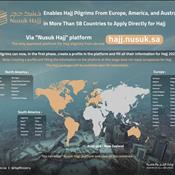 10-Feb-2023Hajj Registrations for 58 Countries
10-Feb-2023Hajj Registrations for 58 Countries -
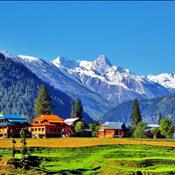 10-Sep-2022A Memorable Visit to Kashmir: My Travelog
10-Sep-2022A Memorable Visit to Kashmir: My Travelog -
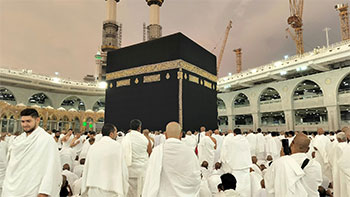 28-Sep-2025Top 10 Umrah Travel Agencies in Pakistan — Best Picks for 2025
28-Sep-2025Top 10 Umrah Travel Agencies in Pakistan — Best Picks for 2025
